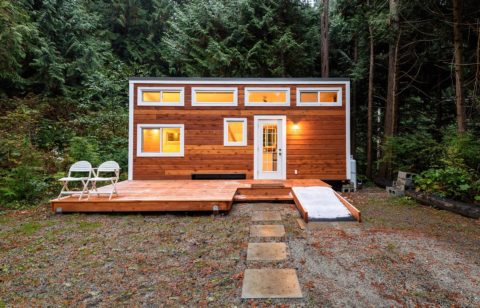Using an IRA to buy investment real estate such as rental properties can be one of the best investments you can make—if done correctly, of course. This has become an increasingly popular investment option due mostly to the fact that real estate almost always increases in value.
In fact, the average price of a U.S. home increased by approximately 106% from 2000 to 2020. So, if you had purchased a home for $126,000 at the beginning of the century, you will have seen a very nice return on your investment 20 years later. And if you purchased a rental property, you would have not only seen an annual average increase, but you would have also profited from the rental income.
What Most People Don’t Understand About IRAs
You undoubtedly know about Traditional IRAs and maybe even Roth IRAs. But are you familiar with self-directed IRAs? With a self-directed IRA, you could invest your retirement income in just about anything including real estate, where you would enjoy several important benefits.
Invested gain taxes
If you buy a rental property outside a self-directed IRA, you will likely be required to pay taxes on your rental income right away. You will also likely be required to pay taxes on the gain when you sell the property even if you plan on reinvesting that money in other investments.
However, the taxes on your real estate income will be delayed so long as you keep the money in your retirement account. This could help you earn a higher after-tax return.
Tax-free growth
As it stands, if you have a Roth IRA, the money will be tax-free when you take a withdrawal after the age of 59 ½. This means if you invest in real estate with a Roth IRA, you will not be required to pay taxes on your rental income, your gains from selling a property, or your capital appreciation.
The downside is that in exchange, you will not receive a tax deduction on your contributions to the Roth IRA as you would with a traditional IRA. If you make a large real estate investment the tax-free growth you would get from a Roth IRA could be a better incentive than the tax savings, you would get initially on a traditional IRA because those gains are taxable when you start to make withdrawals after you have retired.
People Also Read
Your growth will be leveraged
Another benefit of buying real estate through a self-directed IRA is that you don’t have to pay off the entire purchase all at once. You could pay off part of it and then take out a mortgage for the rest. If you do this, you could leverage your money through borrowing to earn a bigger return.
For example, if you make a down payment of $100,000 to buy a $250,000 property you will be realizing rental income out of an asset worth $250,000. So even when you take into consideration the cost of borrowing the money your return should be higher than if you had just bought something worth $100,000. Even better, that return is growing tax-deferred in your IRA.
However, spoiler alert: When you purchase real estate with a mortgage in your IRA it can’t be titled in your name. It must be titled instead in the name of your IRA. In addition, it must be what’s called a non-recourse loan, which means the loan is backed only by the value of the real estate that’s paying for. If you were to default on the loan your lender could seize the property.
Your rental income
According to a recent survey from GOBankingRates, renting is more common than homeownership for retirees who are 65 and older. A big plus of buying a rental property is that you can rent it out and create a steady stream of rental income. You could use this income to pay off the mortgage and any other expenses incurred on your investment property. This means that all you really need to come up with is the down payment.
If you realize rental income above and beyond your mortgage payments, the money will stay in your IRA and will grow tax-deferred. You can then use this money for future investments. And, of course, when you retire, you could continue to receive rental income to supplement your other retirement savings.
Pay for your dream retirement home
Do you have a dream retirement home? Your self-directed IRA could help you pay for that dream. When you buy real estate property through your IRA you can use the income from that property to pay off that dream home’s mortgage. You should be able to do this quickly and effectively with your IRA tax savings. When you’re ready to bail out and retire, you can move the property title from your IRA into your name.
If you wait until you’re at least 59½ to take the property out of your IRA, you won’t have to pay the 10% early withdrawal penalty. However, you cannot live on that property while your IRA still owns it as this can lead to tax problems. Of course, nothing is stopping you from driving by your dream home with a smile on your face knowing that it is steadily being paid off with your rental income.
How to set up a self-directed IRA
Creating a self-directed IRA is not as simple as creating a traditional or Roth IRA. You need to create it as a business with your Secretary of State. It will be an LLC or Limited Liability Company. You should hire an attorney to prepare what’s called an operating agreement. Next, verify the agreement to make sure it meets the requirements for a self-directed IRA LLC as determined by your Secretary of State.
Find an IRA custodian
You will need to open your self-directed IRA with what’s called an IRA custodian. You will finance that IRA with funds or a transferred balance from an existing retirement account. Finally, you will need to work with your IRA custodian to begin the investment process. Your custodian will help you decide on the terms of your investment and then invest in the LLC.
In most cases, you will need to establish what’s called a front-end checkbook account to administer your self-directed IRA. This will be a special checking account to pay for all the expenses incurred by your real estate property as well as a place to deposit your rental income.











